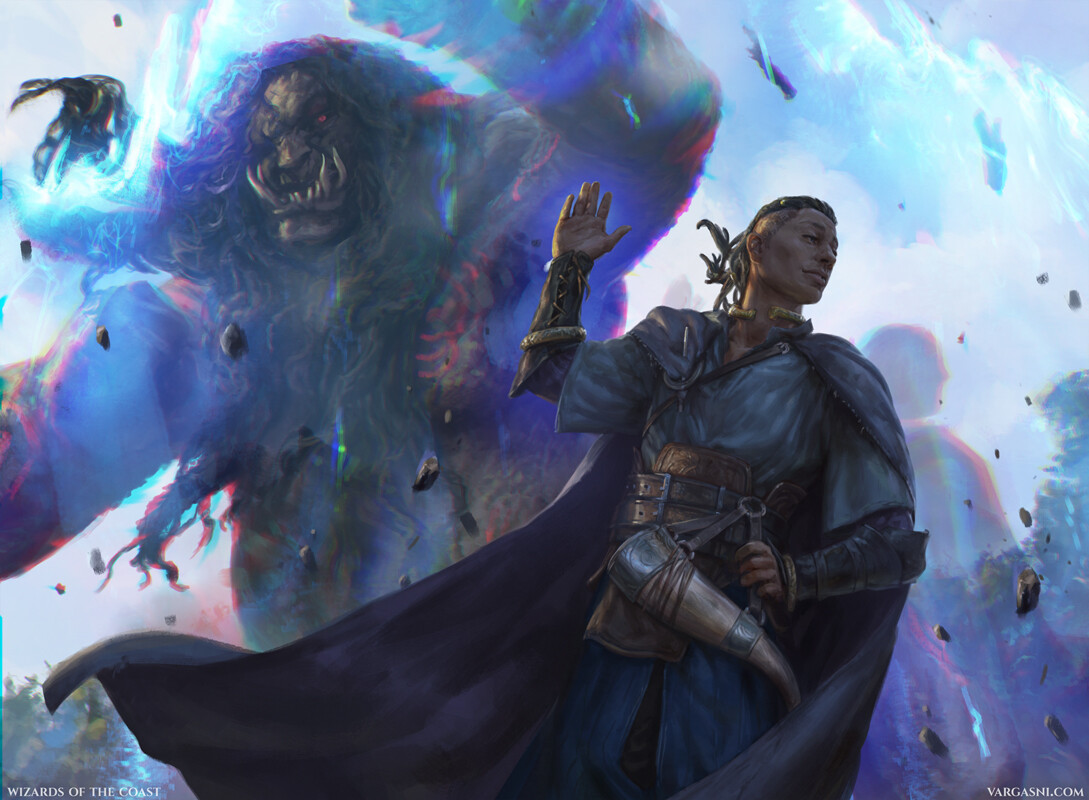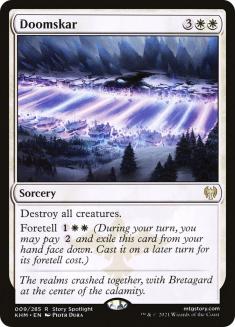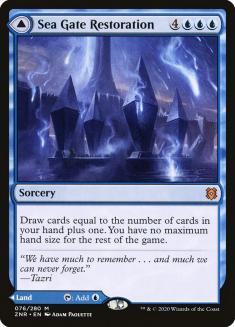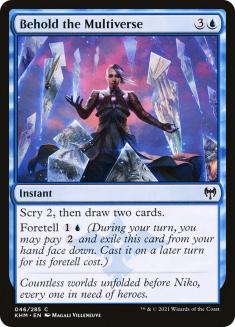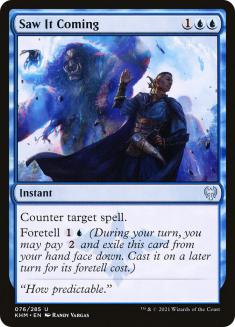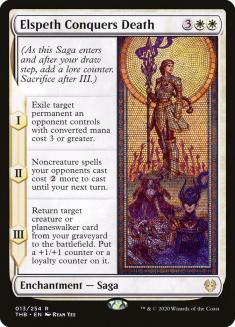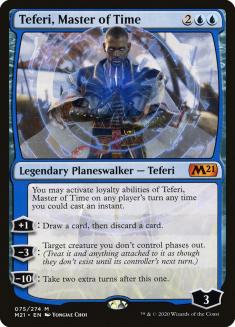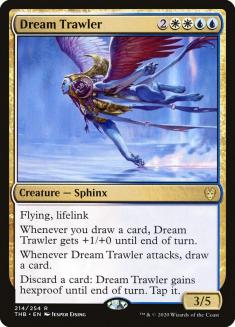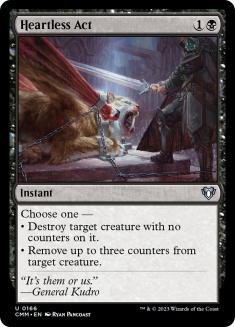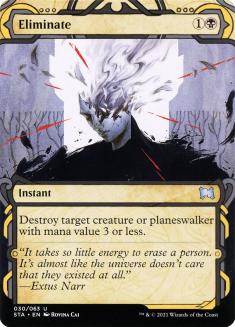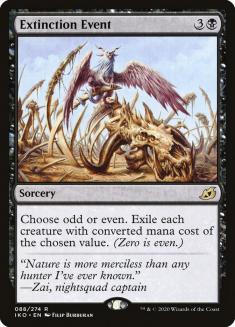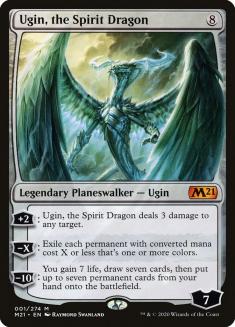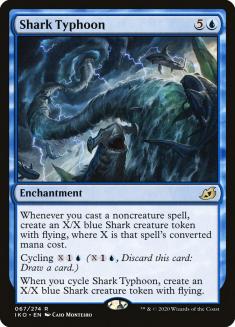Doomskar is a game-changer for control deckbuilders around the world. There has not been a sweeper this strong in any Standard format of the past, even considering the dominant reign of Supreme Verdict. The Azorius Senate hit the scene back then, with a supporting cast of Azorius Charm, Sphinx’s Revelation, and Detention Sphere. It’s that powerful team that carried Supreme Verdict across the finish line, not the spell itself. Shatter the Sky would have been an easy plug-and-play in that format and could have carried the weight Supreme Verdict bore during its time in Standard.
Doomskar is special. It highlights the added devastation that foretell can cause an opponent, prompting alternative game decisions that lead to a few extra life points per game. Opponents will feel compelled to not add pressure to the battlefield, resulting in a win as the control user reveals a Saw It Coming on the opponent’s next spell. When this comes up, it’s all upside. We’re all used to paying a little extra for our sweeper, or having it come with drawbacks, but it looks like that may be behind us for the time being.
Dimir Control has been my control deck of choice for months and I did not anticipate Kaldheim changing that. White-based removal is mediocre and even a sweeper may not have been enough to salvage the early-game. A Turn 3 sweeper was not on my radar, so now white-based control will be front and center for most of us, looking past the recent success of Dimir Control in competitive play. The challenge now is deciding if a third color can be added with the addition of Hengegate Pathway. Due to my love of this shard, I’m going to start the new format with a traditional Esper Control deck.
Creatures (2)
Planeswalkers (5)
Lands (25)
Spells (28)

The Esper Control experiment will work in Kaldheim Standard. If this first draft does not operate as intended after testing and the follow-up changes are not effective, then Yorion, Sky Nomad will be the next step in control’s evolution. The manabase works as is, but I am missing a few components that I wish were a better fit.
Castle Ardenvale and Castle Vantress are two big absences to the Esper Control manabase. Due to the necessity of playing twelve Pathways, there are too few basic lands to ensure the Castles enter the battlefield untapped. Even with their utility, additional lands that enter tapped are detrimental to the flow of spells starting on Turn 2. The Temples take precedent over them, as they’re required to ensure double blue and double white are available by Turn 3 each game.
The utility lands that did make it are the modal DFCs that we all know and love. As I continue to get flak for Sea Gate Restoration, most of you who read my work have experienced the power of the spell. PVDDR, truly the greatest player in the world, does not see eye-to-eye with me on this one. This just goes to show you, even the best players in the world can be dead wrong once in a while!
For the sake of this article’s length, I will not list the multi-page reasoning on why this card deserves a spot in every blue-based control deck. Emeria’s Call is right with it on power level; both enter the battlefield untapped when needed, and so they are easy inclusions. The amount of each being played is lower than I would like because of the need for lands that produce two of our three colors. With twenty blue, seventeen white, and fourteen black sources, this Esper Control manabase is fully operational for the first time in recent history.
The cards from Kaldheim are showcased in this version of Esper Control. Behold the Multiverse is going to be an all-star, possible making cards like Frantic Inventory unnecessary. I’m still playing the powerful, early-game draw spell, but that is due to the limited lands I’m playing. This list has 28 lands, three of which are modal DFCs. If I were to cut Frantic Inventory, that manabase would go up to 30 lands and maximize the copies of Behold the Multiverse. I want to give Frantic Inventory a try before making a drastic change; however, this is on my radar.
Saw It Coming and Doomskar round out the foretell presence in Esper Control, both of which I wrote extensively on in my last article. I could write another mound of words that continue the celebration of the best Standard sweeper ever; however, last week’s article gets the point across. This deck, and Azorius-based control decks to follow, owe their viability to it. The combination of Behold the Multiverse, Saw It Coming, and Doomskar in the same deck is a beautiful thing. Opponents will twist themselves into pretzels as they try to solve the puzzles we create, with possible hidden information being “counter,” “draw,” or “kill everything.”
The basis of Esper Control is the foretell package and the supporting cast are the win conditions of old. This deck would look much different with Yorion but instead looks to maximize disruption prior to adding pressure to battlefield. Esper Control with Yorion will have many more targets to blink, with added tap-out elements to make that happen. In this version of Esper Control, the early-game is dominated by clearing the battlefield, with powerful permanents sealing the game afterward. Each direction with white-based control leads to Elspeth Conquers Death as the pinnacle permanent to resolve.
This version of Esper Control has seven possible targets Game 1 for Elspeth Conquers Death to return. That is an important deckbuilding aspect to consider for control decks, as I have seen many not utilize the final chapter of the powerful Saga. Without returning something to the battlefield, Elspeth Conquers Death is mediocre, with a high exile cost and a minimal impact on the opponent’s spell casting ability for a turn. Returning Teferi, Master of Time; Ashiok, Nightmare Muse; Dream Trawler; or Ugin, the Spirit Dragon will usually swing the game in our favor, with the added loyalty bonus to sweeten the deal.
In sideboarded games, the fourth Elspeth Conquers Death and two Niko Aris join the fight. I’m not convinced Niko Aris is that much better than Jace, Mirror Mage, but time will tell. Both have similar effects and are good against the same type of decks; however, Niko Aris can protect itself with its second ability. Depending on the threats of the format, this new Azorius planeswalker could be completely busted or a dud like its Jace, Mirror Mage counterpart. I’m hoping for the former simply because the card advantage possibility of Niko Aris is extremely compelling. Even without a giant X being paid, it returns to the battlefield with Elspeth Conquers Death and provides considerable card advantage if left uncontested.
The black splash is the controversial piece of this control deck. Adding a third color prevents additional utility lands and stretches the manabase thin with the double-color requirements that many spells have. It’s worth it here due to the inherent weakness of white removal and the glaring strength of black removal. Heartless Act is Doom Blade in Standard and I dedicated a day of content the moment this card was previewed to declare that fact with no regrets since. It’s the reason to play black-based removal and handles most threats cleanly in the early-, mid-, and late-game.
Eliminate is the support spell to Heartless Act. There are not many planeswalkers in the early-game these days and I do not see that changing in Kaldheim Standard. Just in case, this removal spell easily handles them while taking care of most creatures from Turn 3 and before. I would have been content with Eliminate and Erebos’s Intervention as the early-game removal spells on their own, but luckily, we too have many powerful removal spells. Usually in Standard, control players are scraping the gutter for something good enough to kill a creature early and late, which is not the case today.
Ashiok, Nightmare Muse joins the black removal in the maindeck. These spells require fewer mana sources to cast, due to having only a single black requirement. When determining the viability of playing a third color in a control deck, it’s important to identify which color requires the lowest mana investment. All the best black spells in Standard are splashable, making the inclusion of these powerful elements easy.
The next support provided by the splash color is in the sideboard, vital to the success of Esper Control in the new format.
Shatter the Sky may have to sit idly by as Doomskar takes all the credit for control’s upcoming success. There’s a world where a couple of extra white sweepers would help the cause; however, that’s not the case here. Extinction Event will be the more powerful supplemental force for Esper Control over Shatter the Sky because of the creatures that require exile. There are three copies of Extinction Event in the sideboard and its service may be required in the maindeck, depending on how strong the recursion element is in the new format.
Cling to Dust is another black spell that I had in the maindeck but moved out due to more powerful options. If graveyards are getting out of control, black will be the hero of this control story, coming to control’s rescue.
The rest of the deck has a few of control’s non-negotiables. Disdainful Stroke is back in business, joining the Mystical Dispute privilege of being guaranteed in all blue sideboards. It counters big creatures and big spells, and is one of the most-played sideboard counterspells ever.
Mystical Dispute is still the most powerful blue disruption spell for Game 2 and Game 3, but do not sleep on Disdainful Stroke in Standard. The sideboard also has a copy of Drown in the Loch, which is in every control deck I play that can cast it. I’m not confident that it can get the job done against every deck in Standard, but it is a strong sideboard option against control and decks that quickly fill the graveyard.
Finally, every control deck I play in Standard has Ugin, the Spirit Dragon and Shark Typhoon in the maindeck. These two spells are too powerful not to play and bail control out of most difficult situations. Ugin is one that I have used since it was released, even when others were frightened by the mana cost.
Ramp players are not the only ones that get to enjoy a game-ending planeswalker on Turn 8. Control decks easily hit land drops these days, with the assistance of powerful card draw and modal DFCs, making an eight-mana play not farfetched. There would be a second copy of it in here, but the amount of digging that Esper Control can do makes drawing the one a regular occurrence.
Shark Typhoon revolutionized the way reactive control plays out and has continued to produce dynamic gameplay for fans of blue. Unanswered planeswalkers, giant attacking creatures, pressure required in the late-game, card draw, uncounterable threat, and the general surprise factor of it are just a few reasons why Shark Typhoon has a reserved spot in all my control decks. In an Esper Control deck like this one, the foretell cards add to the allure of Shark Typhoon, significantly increasing the possible Iinstant-speed plays.
This is a great starting point for fans of control, and I look forward to unveiling the next few experiments in upcoming articles!

